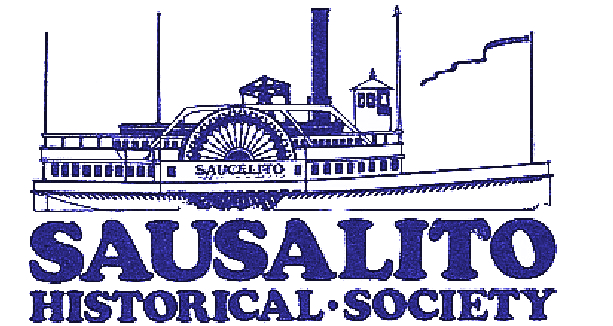By Jerry Taylor and Larry Clinton, Sausalito Historical Society
Long before he was president of the Historical Society, Jerry Taylor was president of the Sausalito/Marin City Little League. And long before that he was a shortstop for the Sausalito Police Department Stars, one of this town’s earliest Little League teams.
In 1996 the league held a special celebration to recognize the official naming of the field in honor of the man who coached local kids through five decades, Konnie Knudsen. On that occasion, Jerry detailed the history of the league for this newspaper. Here are some excerpts from his account:
Sausalito's Little League Baseball traces its history to 1953, when Joe Morello, a former pro baseball player, organized a team of youngsters who played a series of games with a team from Tiburon.
PHOTOS FROM SAUSALITO HISTORICAL SOCIETY
The Little League diamond in 1957
In 1954, the Sausalito Fire Department was enlisted as an official sponsor. Chief Matts Perry directed fireman Swede Pedersen to assist coach Joe Morello. A league was formed with Mill Valley and Tiburon; Sausalito's representatives won the name "Giants" in a drawing. (When the NY Giants moved West in 1958, Sausalito sent a delegation to Seals Stadium to officially welcome and adopt them.) With no home field of its own, the Sausalito team was unofficially the "orphans". The team finished one game behind the Mill Valley Yanks, at 6 wins and 6 losses. The Sausalito News carried weekly stories about the financial and organizational progress, and game descriptions.
In 1955, a field was created on Herb Madden's land, then called Shell Beach (between where the Bank of America and the Spinnaker stand today). Mill Valley had created its own league, so Police Chief Louis Montanos helped create the Police Department Stars, who joined the Giants and played against teams from Tiburon and Strawberry.
By 1956, interest had grown to enable Sausalito to stand on its own, and the Rotary Club Oaks and Salvage Shop Seals debuted. (The new teams took their names from the Bay Area’s highest-level professional teams, the San Francisco Seals and Oakland Oaks of the Pacific Coast League.) The games moved to Richardson Bay School. The managers were: Ed Souza Giants; Fred Gustafson Stars; Wally Mays Oaks; and Konnie Knudsen Seals. Enough boys turned out to fill four teams and to create a Farm Team under Bud Bettencourt. The First all-Sausalito league resulted in a championship for the Seals, presented to the head of the Sausalito Salvage Shop, Clara Crosby, “the Mother of Sausalito Little League."
In 1957, the league received permission to create a permanent home at what is now Willow Creek Academy. An account written the next year recounted how: “Much work and planning was done to develop the diamond from a dusty, rugged field to a regulation ball diamond. With the guidance of Pres. Willard ‘Red’ Hall, parents and youngsters and many friends of Little League were called on to turf the diamond, build dugouts, etc.”
Over the ensuing years, the ball players and their parents grew older and moved on to other interests, but one of us stayed active in Little League for forty years, and embodied Little League baseball to generations of local kids. That's why we recognize his lifetime of dedication and are naming the ballpark
For Konnie Knudsen for his years of dedication to the Little League.
In March, 1996, grizzled league veterans Chuck Bradley and Jerry Taylor organized an alumni reunion softball game for players from the earlies days. The boys of the 1950's were in town to honor Knudsen and all the founders of the league at the ceremonies, and to meet again on the ball field of their youth. Here’s how Jerry described the day in the March 19, 1996 Marinscope:
We rode proudly on a truck together in the parade, cheering our 5-15 year old successors ahead of us, proud of our roles, and our parents' roles, in their heritage. We cheered, and we cried at the field during the ceremony. We watched the kids wearing "our" uniforms reenact time-honored customs, and we were young again.
The Sunday morning gathering at Smitty's was full of stories. I saw guys I knew from Cub Scouts and Central School for the first time in thirty or thirty-five years. Following some light lubrication, we reassembled our old teams on the field. The original team, the Giants, from 1954, and the Stars, founded in 1955, linked together under the coaching of Bob Souza, whose father Ed coached the Fire Department Giants to a championship in 1957. The "newcomers" Oaks and Seals, who started in 1956, were coached by Dick Bettencourt, whose dad Bud had coached many of us boys in the 1950's.
The game ended in a familiar manner, as someone muttered: "Damn Seals, they won again." But that's not quite right. We all won, and we're ready to suit up again.
This year, Konnie Knudsen’s son Steve and his daughter Honour are coaching a team that they named the Seals in honor of their father. Opening day is scheduled for Saturday, March 14, starting with a parade of players, coaches and parents in decorated vehicles. At Konnie Knudsen Field, there will be well-wishes and recognition of volunteers and their contributions to the league, refreshments and photo ops. Topping it off will be a home run derby. For details, check the League’s website: https://www.smcll.com.
PHOTOS FROM SAUSALITO HISTORICAL SOCIETY
The Little League diamond in 2020











